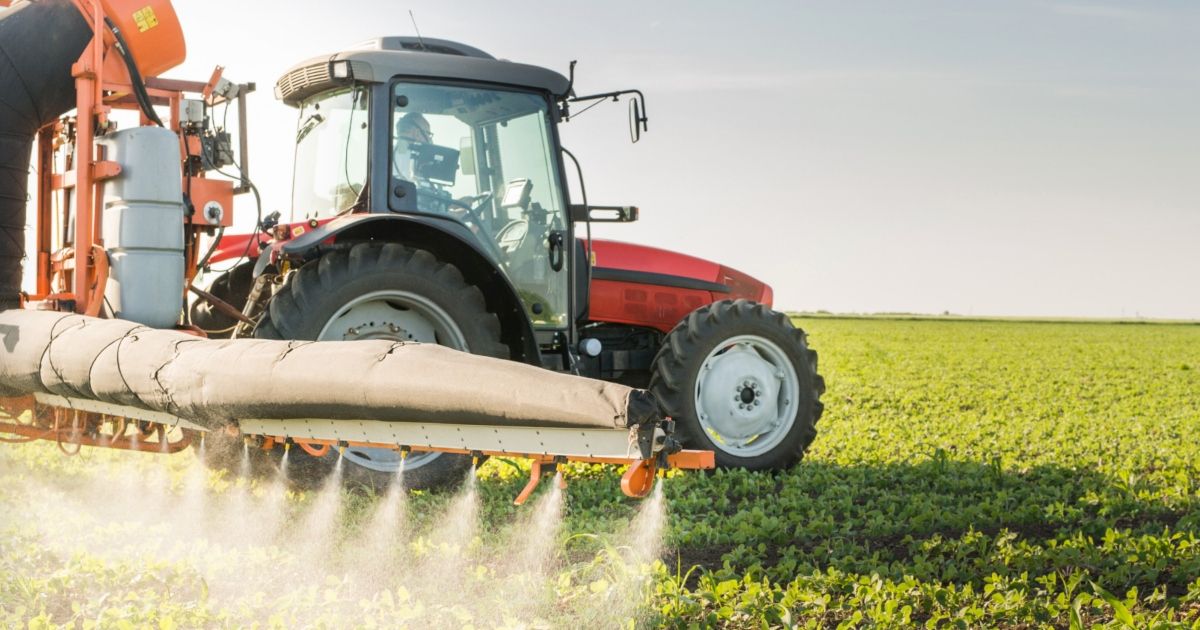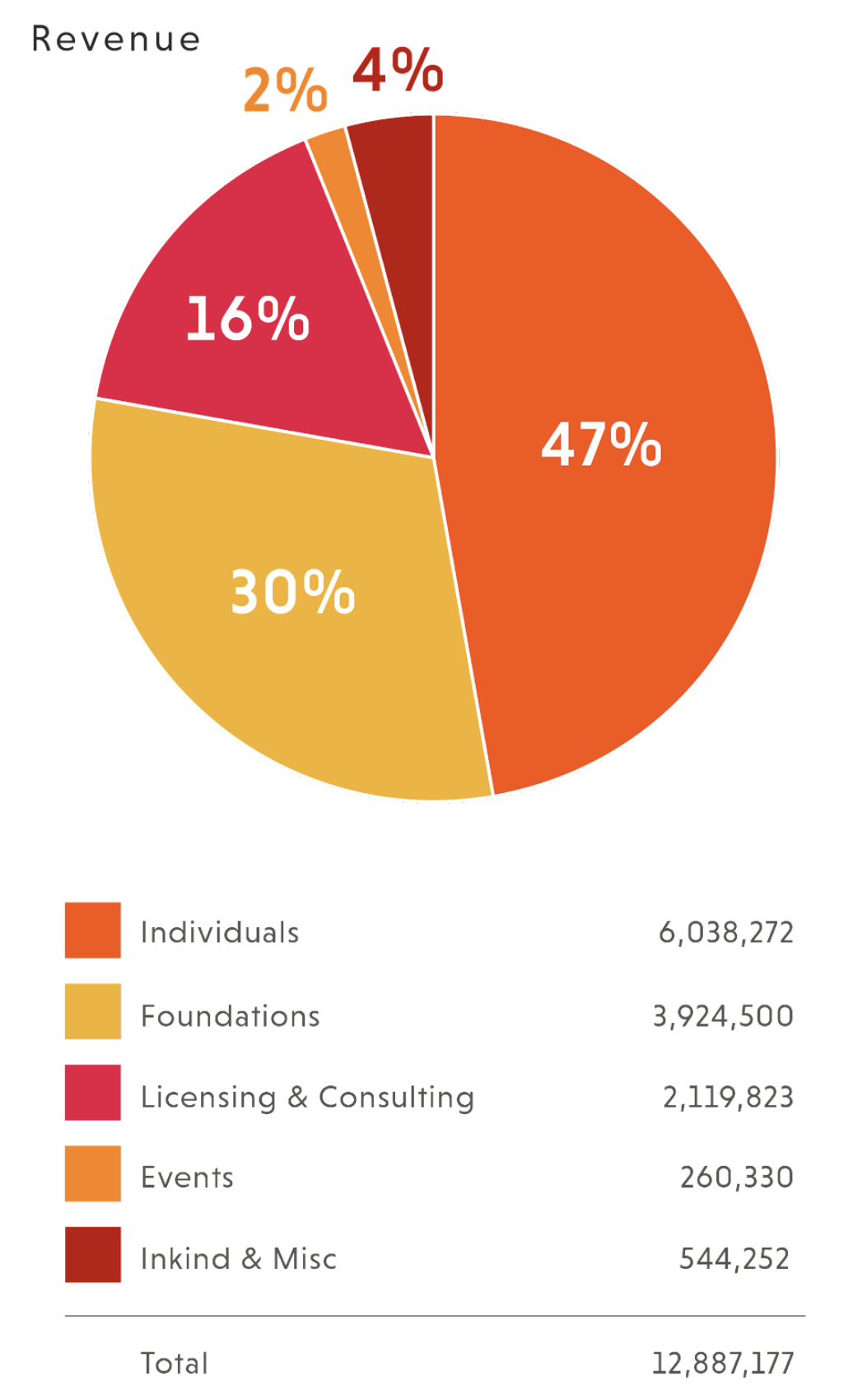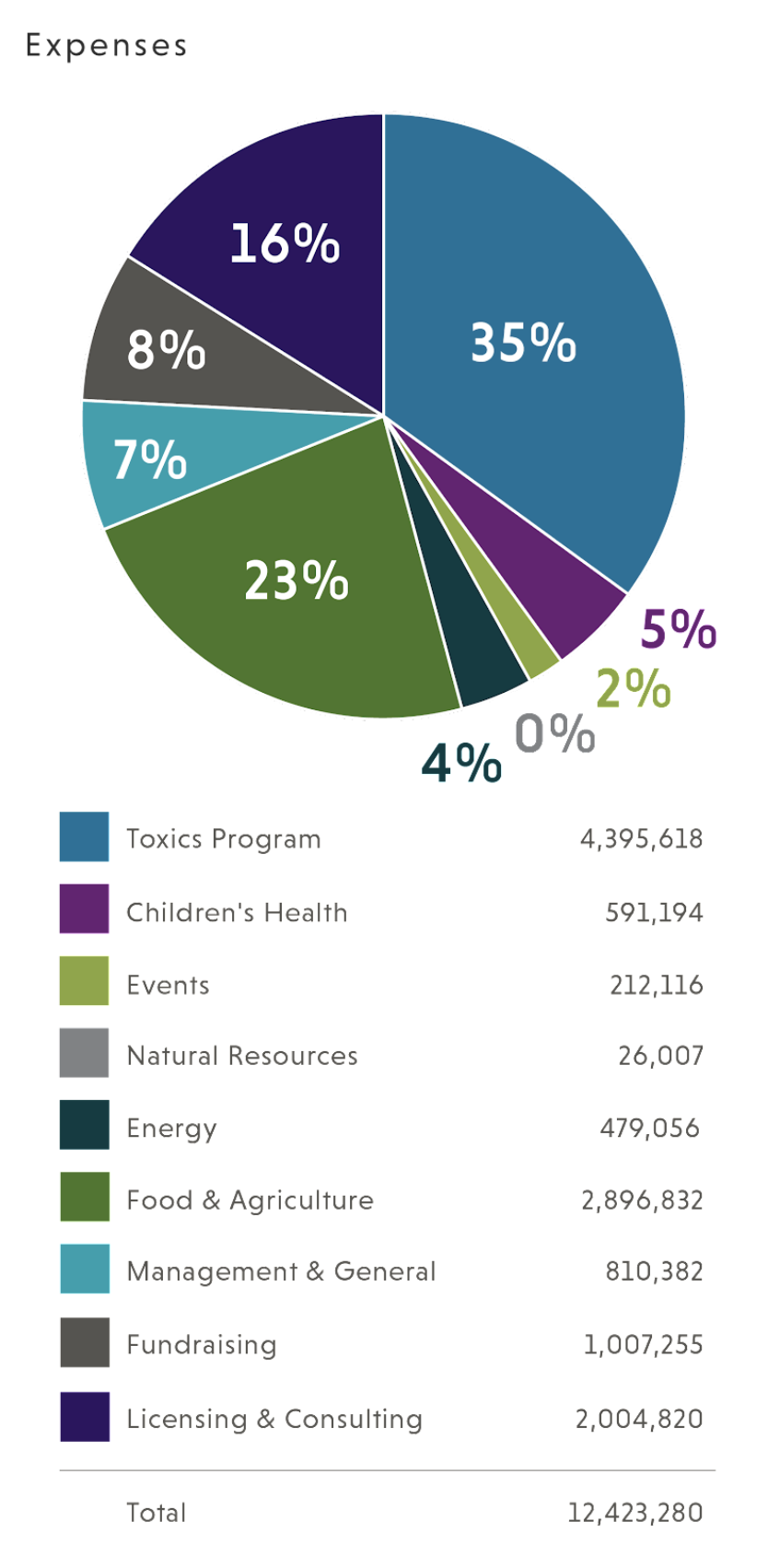
FOREWARD
As we at EWG reflect on the accomplishments of another year – empowering people to live healthier lives in a healthier environment – we continue to be astonished by the growing community of consumers who use our work every day, the millions of people who have changed the trajectory of what we do, and how EWG has become a powerful force for change.
In 2021, EWG worked more closely with leaders in the marketplace. We helped major brands reformulate their personal care products to meet our standards instead of waiting for Washington to create their own. And we created new standards in the interest of public health. EWG scientists reviewed the best and latest scientific evidence, legal standards and health advisories to define water quality and consumer product goals that will truly protect public health.
Just a glance through our major reports and studies from over the past decade shows their incredible impact and highlights one key takeaway: As much as we were able to drive change in legislatures in Washington and in California, it was personal action and the private sector that affected people’s lives most immediately and profoundly. See for yourself:
BIG WINS
There were several big wins this year that resulted directly from your long-term investment in EWG, demonstrating that science, facts, grassroots fly-ins, film screenings, massive media coverage and skilled advocacy can still bring about environmental policy change.

PFAS
In many ways, 2021 was the year of PFAS.
Media coverage made these toxic “forever chemicals” rise to the top of public awareness. So many state and federal bills have been written to address PFAS regulation, and provisions included in larger bills to provide funding for cleanup, that we can't include them all here. In short: U.S. environmental agencies and lawmakers are scrambling, finally, to begin to address PFAS pollution.
- Holding the Department of Defense accountable for PFAS pollution
In December, the Senate Homeland Security and Governmental Affairs Committee held a devastating hearing on the Defense Department’s failure to protect service members from PFAS pollution, directly citing EWG’s PFAS research and mapping as evidence of the extent of PFAS pollution on military sites.
- A presidential directive to avoid buying products made with PFAS
Also in December, the Biden administration issued an executive order directing federal agencies to seek alternatives to products made with PFAS. The new directive applies to more than $650 billion in annual federal purchases of goods and services from the private sector and creates an important new marketplace incentive for safer products.
- Federal funding for PFAS cleanup
Several pieces of major federal legislation were introduced and/or won in 2021 that begin to address PFAS pollution and include billions of dollars in funding for cleanup.
First, EWG led efforts to secure $10 billion in the bipartisan infrastructure bill to address PFAS in drinking water, including $5 billion to help small and disadvantaged communities address PFAS in drinking water; $4 billion to help drinking water utilities remove PFAS from drinking water supplies or connect well owners to local water systems; and $1 billion to help wastewater utilities address PFAS in discharges.
Second, EWG led efforts to address PFAS contamination near Department of Defense installations and military bases, securing $549 million for cleanup in the House version of the National Defense Authorization Act.
EWG also worked with the largest national firefighter's union to secure $80 million in the budget reconciliation bill to help fire departments buy PFAS-free foam and gear.
- Food packaging bans
There are also state and federal efforts to stop new PFAS pollution by banning PFAS use on food packing. In October, California made the first move by successfully banning PFAS from paper, paperboard and plant-based food packaging, utensils and paper straws, effective January 1, 2023. And in November, a bipartisan bill was introduced in the U.S. Senate to do the same, beginning in 2024.
- Movement at the EPA
In March, the Environmental Protection Agency announced plans to develop potential “effluent limitation guidelines” to limit PFAS discharges into surface waters or sent to wastewater treatment facilities. As the first step in this process, the EPA asked chemical companies that manufacture PFAS to provide information about the production and discharge of these chemicals, as required by the Clean Water Act. The resulting guidelines may also include requirements for new PFAS monitoring, which would mandate disclosure about ongoing releases into the environment – a necessary first step in any effort to make significant change.
Then, in October, the EPA published its new “strategic roadmap” to confront PFAS contamination. This is a whole-agency approach that marks the first major step toward regulating PFAS at the national level. It also represents the culmination of more than 20 years of work by EWG and its staff. As a first step in this process, the EPA reviewed studies about the impact of PFAS impact on human health, which show that exposure to the chemicals likely causes cancer and reduces vaccine efficacy. As a result, the agency has changed its position on safe levels of exposure, finding they should be thousands of times lower than the limits it first proposed in 2016. Following the advisory board’s peer review of this finding, the EPA is expected to develop new, enforceable drinking water limits for PFAS in tap water.
Expansion of access to clean beauty
Thanks to you, EWG has become an undisputed scientific leader in the clean beauty movement. Our pioneering EWG VERIFIED™ and Reviewed for Science programs fill an information gap for formulators who are left with little to no health and safety guidance from the Food and Drug Administration and the EPA, which have taken a largely hands-off approach to this industry.
One exciting outcome of this is the expansion of clean beauty – specifically, EWG VERIFIED products – offered via cost-conscious retailers, as well as the addition of three major personal care product brands to the program. This year:
- We added almost 100 makeup and personal care products from national brands Olay, Almay and Honest to the EWG VERIFIED roster.
- EWG began working directly with cosmetic ingredient manufacturers to verify individual ingredients and formulations before they are sold to brands. This will dramatically extend our reach into the personal care product market supply chain.
- In July, Amazon added EWG VERIFIED to its Climate Pledge Friendly initiative, which means VERIFIED products sold on the site are highlighted in search results, making it easier for consumers to discover the VERIFIED program and buy safer products directly from Amazon. This level of visibility is also a boon for smaller VERIFIED brands.
- Walmart followed suit in September, announcing that EWG VERIFIED will be one of 30 certification programs included in its Built for Better program. Products with these certifications, including all VERIFIED personal care, beauty, baby care and cleaning products, will be flagged in stores and online with the Built for Better icon.

Roundup: The world’s most popular glyphosate weedkiller will no longer be sold to consumers
After a series of blows to the Roundup brand’s reputation – including a string of expensive lawsuits, exposé research by EWG and glyphosate’s addition to California’s Proposition 65 list of chemicals known to cause cancer – Bayer announced it will end residential sales of Roundup made with glyphosate in 2023.
This is an exciting and long-overdue development to prevent home-use exposure to the carcinogen. Now, with your support, we will continue our push to end pre-harvest use of glyphosate on food crops, a major reason the weedkiller contaminates so many foods. Together, these two developments will significantly reduce direct human exposure to this toxic pesticide.
Changing the carbon storage narrative
In 2021, we helped change the public narrative about the use of agriculture to store carbon in the ground as a solution to the climate crisis.
Carbon sequestration in soil is often touted by politicians and the agriculture industry as a miracle cure for the climate emergency. Cover crops – plantings between growing seasons that have important soil and water quality benefits – are considered by some, including industry groups, to be key to capturing carbon.
But we showed, through our GIS mapping, how very few acres in the Corn Belt have cover crops. They are becoming more prevalent, but very slowly, and are still used on only a small share of cropland in the four Midwestern states we studied.
This in turn allowed us to illustrate, through the facts on the ground backed by our research, how the industry-driven narrative about sequestration is merely wishful thinking: Scaling up the use of cover crops would indeed bring greater benefits for soil erosion reduction and water quality, but the prevalence of cover crops isn’t enough to drive a solution to the climate crisis.
We spoke with many members of the news media about the flaws in reasoning behind carbon sequestration in soil and saw a change in how the news media discusses this issue, compared to the end of 2020.

Bringing fairness to farming
With the change in administration, we saw a chance to bring a new focus to the distribution of farm subsidies, specifically to small farmers and farmers of color.
EWG has long worked on farm subsidies and the unfairness with which they’re distributed. We saw an opening to get more vocal and draw attention to the inequitable distribution of farm subsidies to farmers who are white and wealthy and run large farms. We relentlessly drove this point home early in the year. Our continued work in this space was very likely instrumental in encouraging the current administration to put a special effort into giving farm subsidies to smaller farms, as well as farmers of color.
FINANCES
EWG provides one of the best returns on your philanthropic dollar, to shape policy conversations on public health, lead entire business sectors away from priority chemicals and reach consumers through the megaphone of our social media and appearances in mainstream media.
And we achieve this impact on an annual budget that is one-tenth the size of other environmental nonprofits with the major national reach of EWG.
There are many reasons we can do this. The most important is the reputation we’ve earned as a scientific leader on the topic of environmental exposure. This leadership has turned our top issues – like tackling the “forever chemicals” known as PFAS in our water – into national, mainstream priorities.
And our sound scientific leadership ensures that action taken by manufacturers and policymakers has enough teeth to protect public health effectively, the way consumers expect, so that some day, when environmental standards are legal, they will also equal safe.

